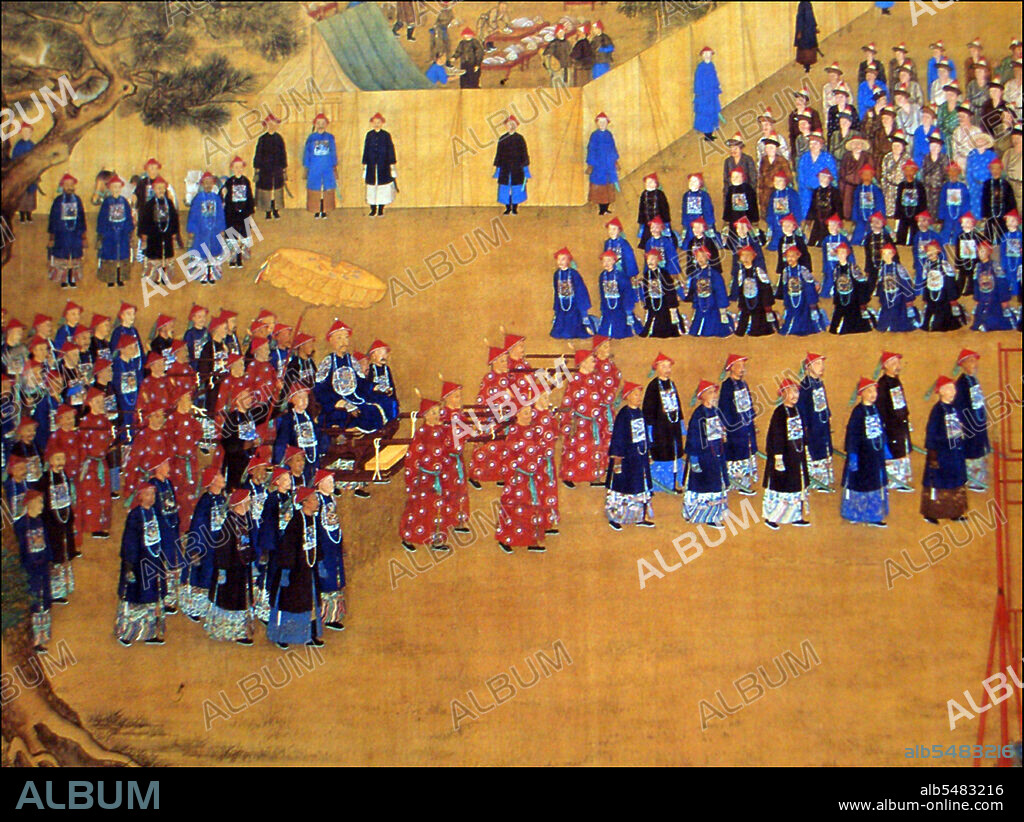alb5483216
China: Emperor Qianlong and his court in Chengde, the Qing Dynasty Sumer Residence, by Giuseppe Castiglione.

|
Zu einem anderen Lightbox hinzufügen |
|
Zu einem anderen Lightbox hinzufügen |



Haben Sie bereits ein Konto? Anmelden
Sie haben kein Konto? Registrieren
Dieses Bild kaufen.
Nutzung auswählen:

Titel:
China: Emperor Qianlong and his court in Chengde, the Qing Dynasty Sumer Residence, by Giuseppe Castiglione.
Untertitel:
Siehe automatische Übersetzung
In 1703, Chengde was chosen by the Kangxi Emperor as the location for his summer residence. Constructed throughout the eighteenth century, the Mountain Resort was used by both the Yongzheng and Qianlong emperors. The site is currently an UNESCO World Heritage Site. Since the seat of government followed the emperor, Chengde was a political center of the Chinese empire during these times. Chengde, formerly known as Jehol, reached its height under the Qianlong Emperor 1735-1796 (died 1799). The great monastery temple of the Potala, loosely based on the famous Potala in Lhasa, was completed after just four years of work in 1771. It was heavily decorated with gold and the emperor worshipped in the Golden Pavilion. In the temple itself was a bronze-gilt statue of Tsongkhapa, the Reformer of the Gelugpa sect.
Bildnachweis:
Album / Pictures From History/Universal Images Group
Freigaben (Releases):
Model: Nein - Eigentum: Nein
Rechtefragen?
Rechtefragen?
Bildgröße:
4815 x 3617 px | 49.8 MB
Druckgröße:
40.8 x 30.6 cm | 16.1 x 12.1 in (300 dpi)
Schlüsselwörter:
ASIEN • ASIEN, KONTINENT • CASTIGLIONE, GIUSEPPE • CHINESIN • CHINESISCH • GEMAELDE • GESCHICHTE • KONTINENT, ASIEN • KUNST • MALEREI • MANDSCHU • QING-DYNASTIE • ZEITGESCHICHTE
 Pinterest
Pinterest Twitter
Twitter Facebook
Facebook Link kopieren
Link kopieren Email
Email
